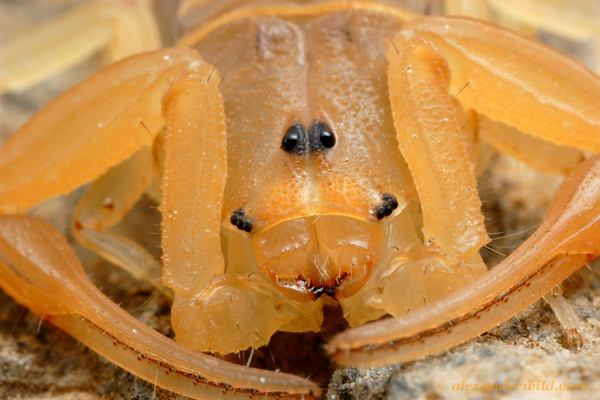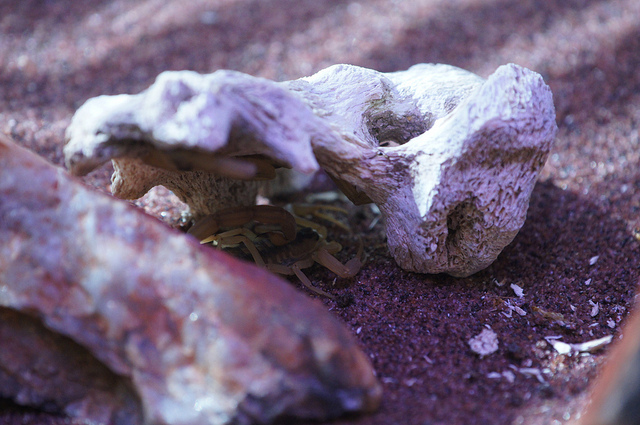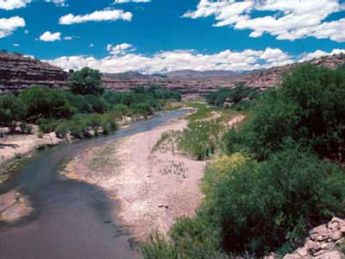Habitat
Geographical Preferences
Centruroides sculpturatus lives within the southwest United States (Arizona, California, Nevada, New Mexico, and Utah) and parts of northern Mexico. It generally resides in arid regions, but it prefers the riparian point between land and water too. This specific type of habitat takes up a very small percentage of the southwest, but contains a tremendous amount of plant and animal diversity. One might think that scorpions only live in the sand dunes of deserts, but C. sculpturatus likes to occupy cooler, damp areas because of the abundance of insects to prey on. These scorpions can be found hiding during daylight hours under rocks, flower pots, and any other dark and moist spaces.
Photo credit Craig Elliot
Habitat Conditions
The Arizona Bark Scorpion has adapted quite well to living in extreme temperatures. Other organisms, such as Ephedra viridis, have adapted to this type of climate too. Arizona Bark Scorpions can go for long periods without drinking water or eating when sources are scarce. Along with most other scorpions, the Arizona Bark Scorpion can withstand incredible temperatures and deadly levels of water loss. One of these scorpions can regain 70% of its lost water weight when rehydrating after going a long time without drinking.
Photo credit Bureau of Land Management
Ecological Niche
Scorpions are an important part of their ecosystems as they help regulate insect populations by competing with other species and organisms to eat them. C. sculpturatus is preyed upon by organisms such as owls, bats, mice, lizards, snakes, and tarantulas in the food chain. Like most other scorpions, C. sculpturatus won't go looking to cause trouble, like stinging people or animals, unless it is necessary for defense.
Photo credit Tim Vickers
Learn about the adaptation of C. sculpturatus!
Get back to the main page by clicking here!



.jpg)